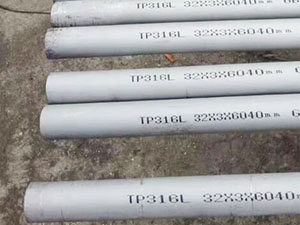Dual certified 304/304H is used as a material of construction up to 1500°F. Slight scaling begins at about 1200°F. This is the 0.04% minimum carbon version of type 304 stainless. It has general corrosion resistance similar to the low carbon 304/304L. However, it is subject to carbide precipitation in the heat affected zone (HAZ) of welds. Weldments may be sensitive to HAZ intergranular corrosion in oxidizing acid environments, and to polythionic acid stress corrosion cracking. The carbide precipitation is not harmful to high temperature mechanical properties.
304/304H is welded using the 22Cr 11Ni filler wire (ER308), or covered electrodes (E308). Post-weld heat treatment is not necessary for most high temperature service.
Chemistry
|
|
Cr
|
Ni
|
C
|
Mn
|
Si
|
P
|
S
|
Fe
|
|
MIN
|
18.0
|
8.0
|
0.04
|
-
|
-
|
-
|
-
|
-
|
|
MAX
|
20.0
|
10.5
|
0.08
|
2.0
|
0.75
|
0.04
|
0.03
|
Balance
|
Specifications
Inventory
304 / 304H Plate, 304 / 304H Weld Wire
Common Trade Names
304H Stainless
Features
· Elevated temperature service to 1500°F
· Corrosion resistance similar to 304/304L
Applications
· Pressure Vessels
· Petrochemical Equipment
Physical Properties
Density: 0.285 lb/inch3
|
Temperature, °F
|
212
|
1600
|
|
Coefficient* of Thermal Expansion, in/in°F x 10-6
|
9.4
|
-
|
|
Thermal Conductivity
Btu • ft/ft2 • hr • °F
|
9.4
|
10.9
|
* 70°F to indicated temperature.
Mechanical Properties
Representative Tensile Properties
Maximum Allowable Stresses, ASME Section VIII, Div 1 Temperature, °
|
Temperature, °F
|
200
|
400
|
600
|
800
|
1000
|
1200
|
1400
|
1500
|
|
stress, ksi
|
20.0
|
18.3
|
16.6
|
15.2
|
14.0
|
6.1
|
2.3
|
1.4
|





